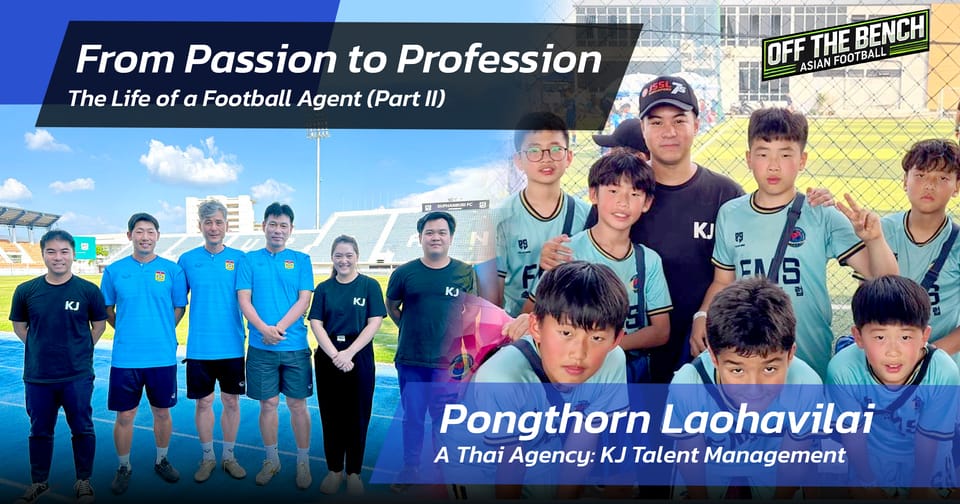The Untold Story of a Kitman: From Locker Room to Touchline
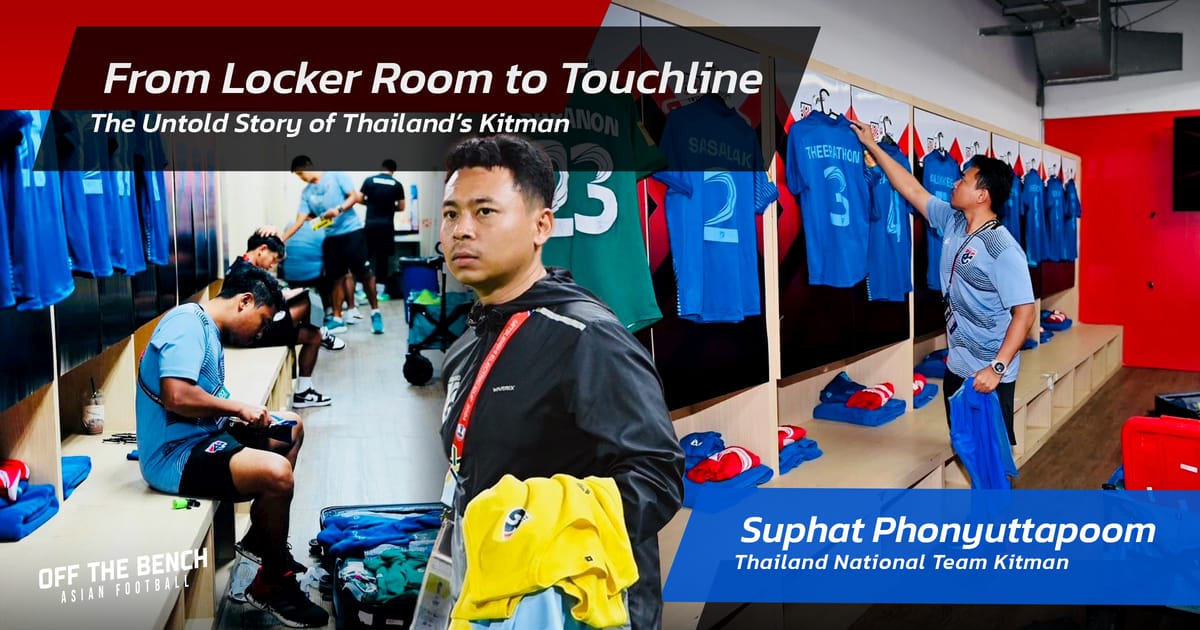
"Missing socks, shrinking jerseys, and running out of water before a match?—welcome to the world of a Kitman."
Interview with the Kitman of the Thailand National Team
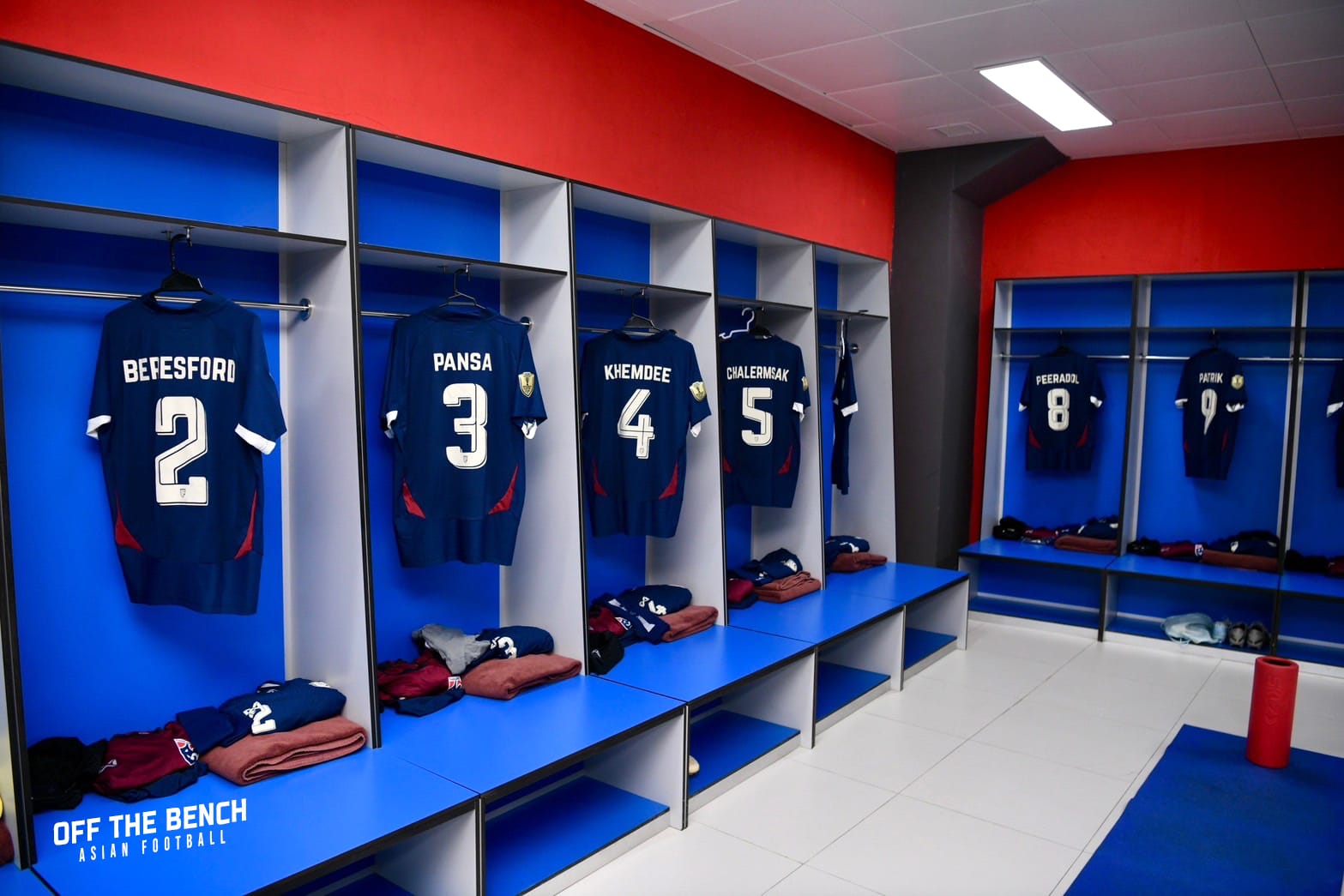
Where Can You Spot the Kitman During a Match?
"When watching the national team match, where should we look to find you?"
"If you're looking for me, check around the ice bucket near the substitutes’ bench. If you observe closely, you'll always see me sneaking off to refill water before the second half begins."
This is the response from someone who works tirelessly behind the scenes. They may see themselves as just a small cog in the machine, but without their dedication and commitment, the team’s performance on the pitch would never be as seamless as it appears. Off The Bench also couldn’t help but wonder—has there ever been a case of misprinted names, shrunken jerseys, or missing kits?"
This is the story of the Kitman—a crucial figure responsible for the national team’s kits and equipment. Having served multiple generations of Thailand's national teams, he shares insights into his work, responsibilities, and behind-the-scenes stories that football fans rarely get to hear.
Meet “Note” Suphat Phonyuttapoom, Kitman of the Thailand National Team.
The Journey to Becoming the National Team’s Kitman
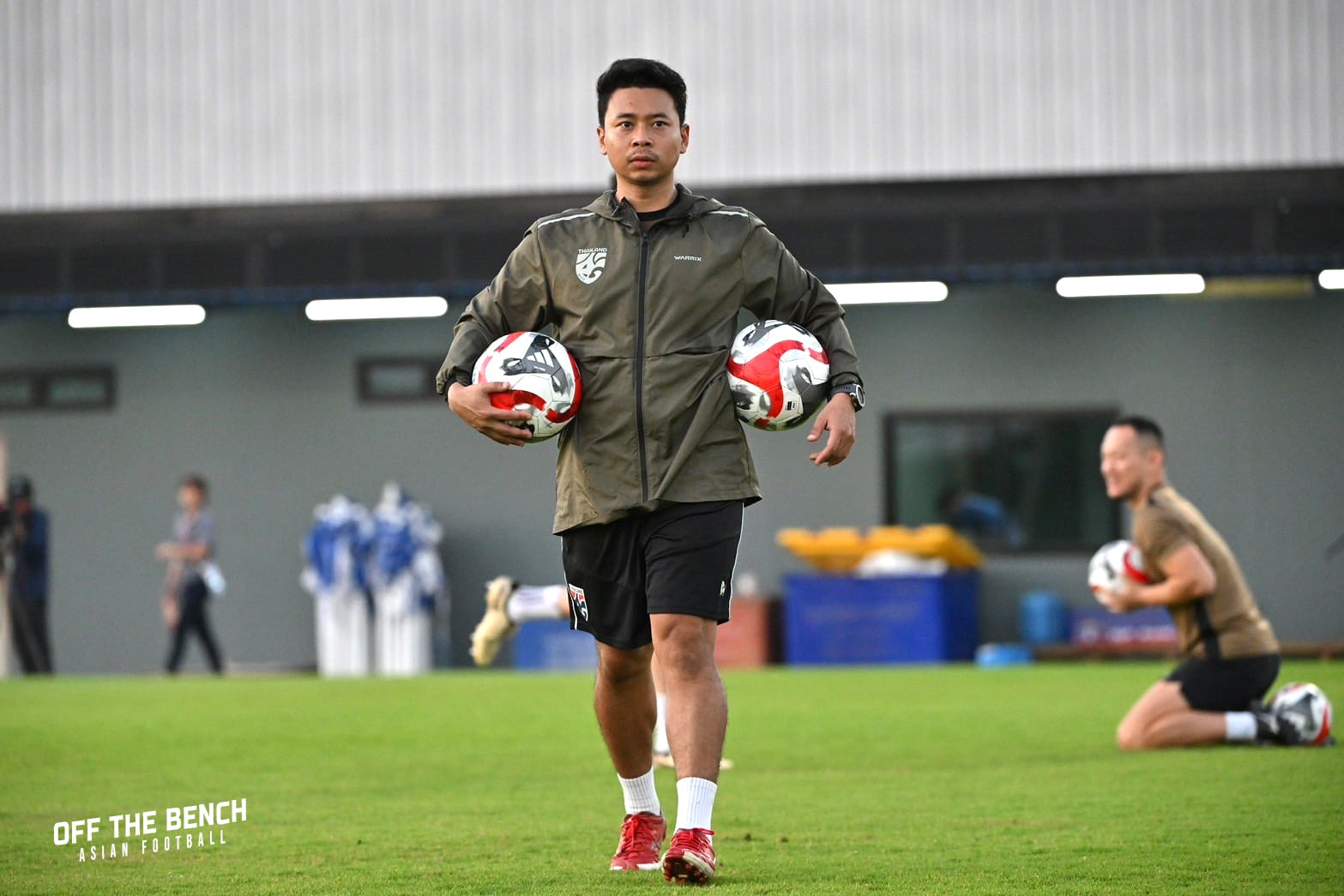
Before taking on his current role, Not didn’t start as a Kitman. He initially worked as a physiotherapist and masseur before transitioning into this role. So how did he get here?
"I graduated with a degree in sports science and started my career as a physiotherapist and masseur at the club level. I worked in this field for many years before receiving an invitation to join the Football Association of Thailand. The first national team I worked with was the U-17 squad, where I served as the team’s physiotherapist and masseur."
"Later, when the senior national team underwent changes, transitioning from Coach Kiatisuk ‘Zico’ Senamuang to Milovan Rajevac, a completely new backroom staff was assembled. That’s when I was given the opportunity to join the senior national team setup, and I’ve been here ever since—nearly 9 to 10 years now."

More Than Just Jerseys: What Does a Kitman Actually Do?
Many people assume that a Kitman’s job is simply preparing match kits, but in reality, their responsibilities extend far beyond that. The role covers a wide range of tasks, including handling drinking water, training equipment, and even players’ personal belongings.
"In the association, the Kitman falls under the National Teams and Football Activities department. Apart from managing match kits, we work behind the scenes on almost everything—preparing drinking water, snacks, training gear, and ensuring players have everything they need before stepping onto the field."
"The national team typically has two Kitmen, which is usually sufficient. The staff at the association have worked together for a long time, and every department helps each other. You’ll often see photographers carrying water bottles or masseurs helping move footballs—it’s just part of our daily routine."
The Pressure of Ensuring Perfect Kits
At the national level, everything must be flawless. Even a small mistake, like a misspelled name on a jersey, can become a major embarrassment. Kitmen must meticulously plan every detail.
"As soon as the squad list is announced and the official schedule is confirmed, we coordinate with the national team’s kit supplier to receive all necessary attire, including training kits, match jerseys, travel outfits, and casual wear. Each player’s set is carefully prepared."
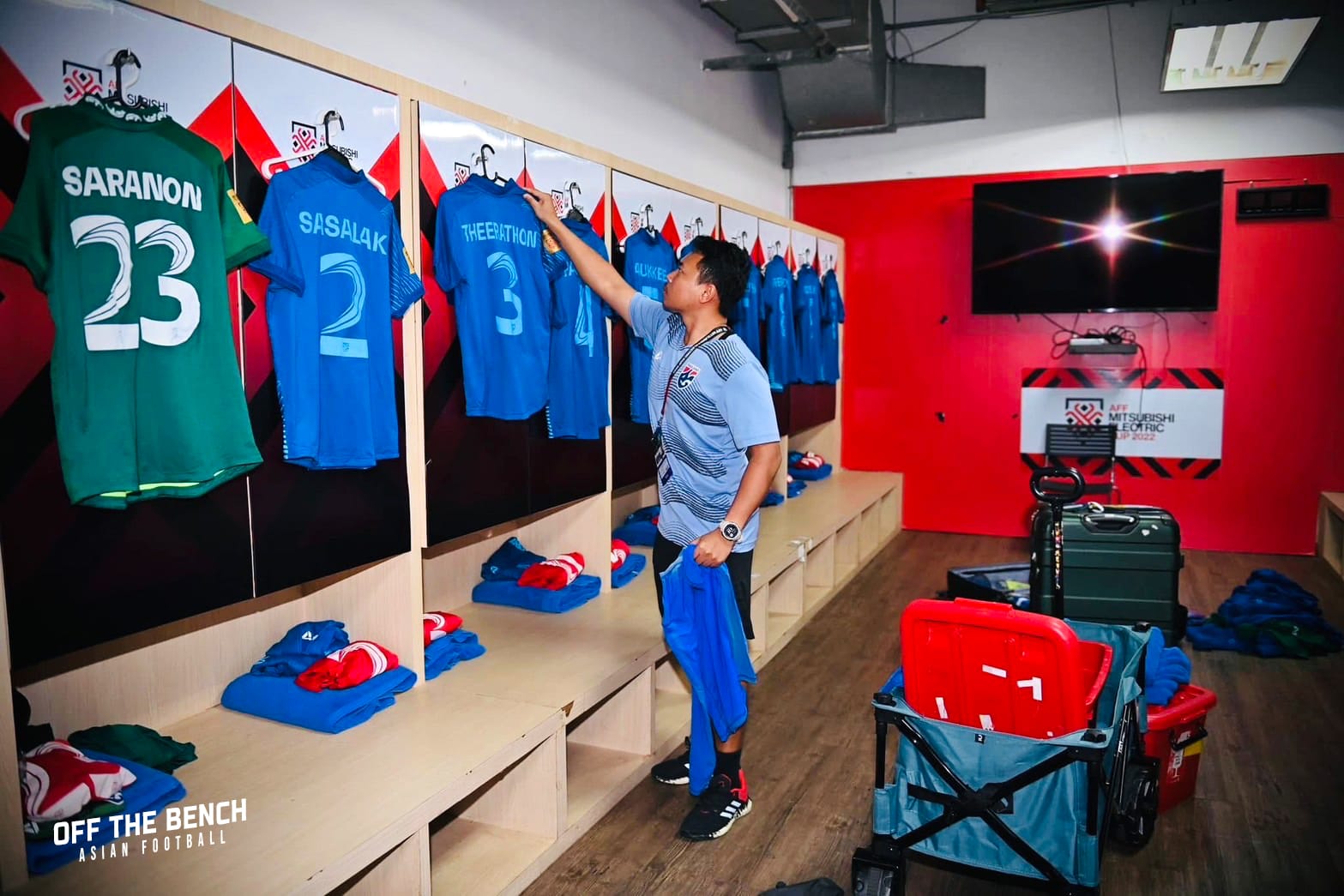
"To avoid any errors before match day, we double-check every detail upon receiving the kits."
There have been instances in football history where even global icons, like David Beckham, had their name misspelled on their jersey—‘Beckam’ instead of ‘Beckham’—during the 1997 Charity Shield match between Manchester United and Chelsea in front of 73,000 fans.
"But for Thailand’s national team, we’ve never encountered an issue so severe that it couldn’t be corrected in time."
The Locker Room: A Pre-Match Sanctuary
On match day, everything in the locker room is meticulously arranged—jerseys neatly hung, numbers clearly visible, towels folded, boots and socks paired together. This is all part of the Kitman’s job.
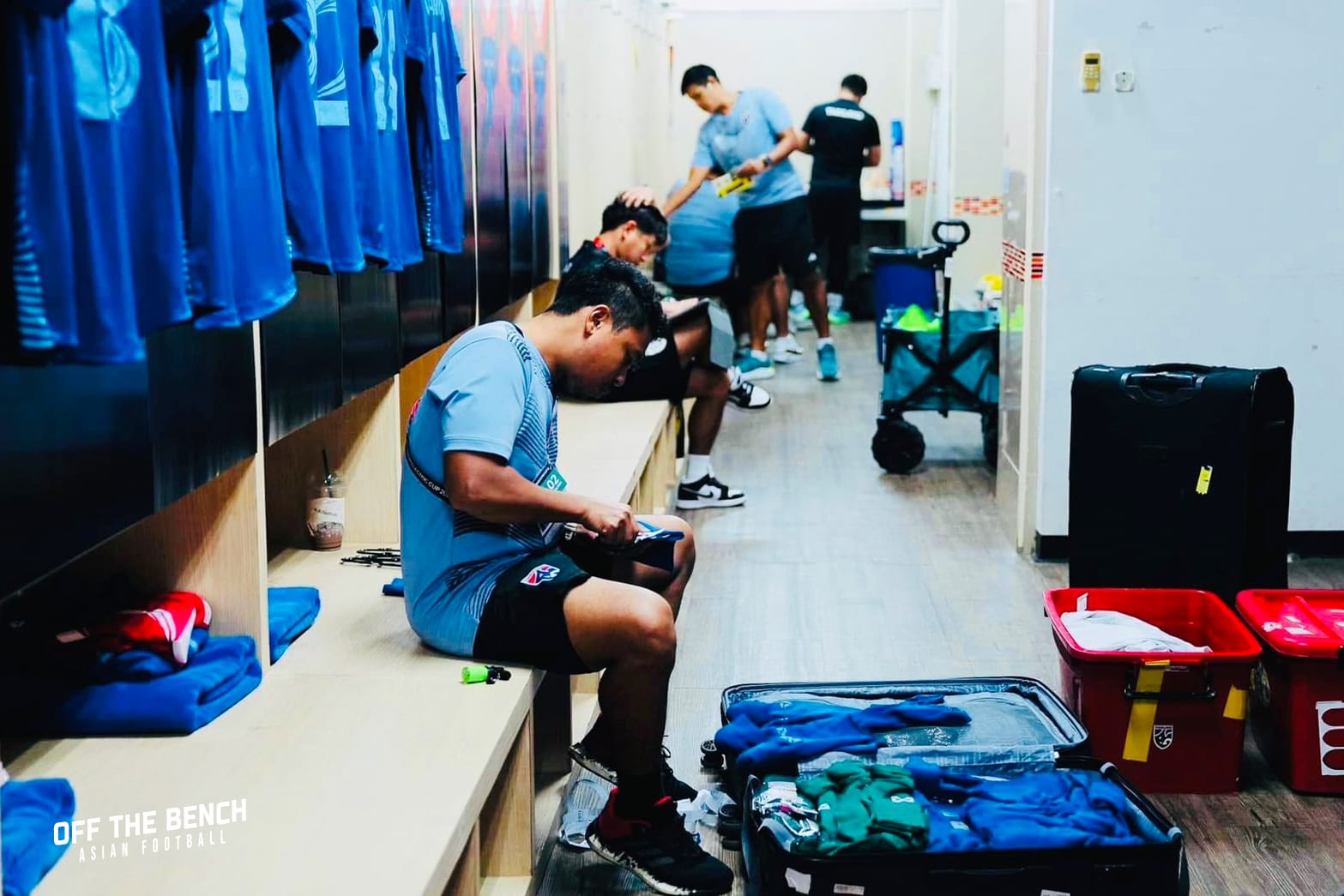
"Players receive their kits from the sponsor. The number of jerseys per tournament depends on factors like the number of matches, whether there are home and away kits, and additional considerations for overseas tournaments to prevent shortages."
"Some players love giving their jerseys away to fans after almost every match. We sometimes have to remind them, ‘Hey! We still have another game tomorrow!’ because running out of jerseys would be a major issue."
Managing the National Team’s Image
Beyond match kits, Kitmen are also responsible for ensuring that the players maintain a polished image in public appearances.
"It’s not just about the 90 minutes on the pitch. Players don’t just play and leave. Managing kits extends to training gear, warm-up suits, formal attire, and jackets—all of which must meet the sponsor’s guidelines."
"We oversee this to ensure that the national team always presents a professional image when covered by the media."
The Small Details That Matter
A Kitman’s job isn’t just about handling kits; they also have to pay attention to each player's unique preferences and habits.

"Each player has specific needs. Some prefer drinking only a particular brand of sports drink, so we arrange their bottle in a designated spot. For example, if a player operates on the right side of the pitch, we make sure their bottle is placed conveniently near them."
"Players usually bring their own boots, and after training or matches, they take them back. However, during training camps, some players leave them with us for cleaning and preparation for the next session."
Hydration and Nutrition: The Hidden Challenge
Providing adequate hydration and nutrition for players is a critical responsibility, especially during international tournaments.
"People might think a Kitman just carries water, but they’ve never had to lug water across a pitch."
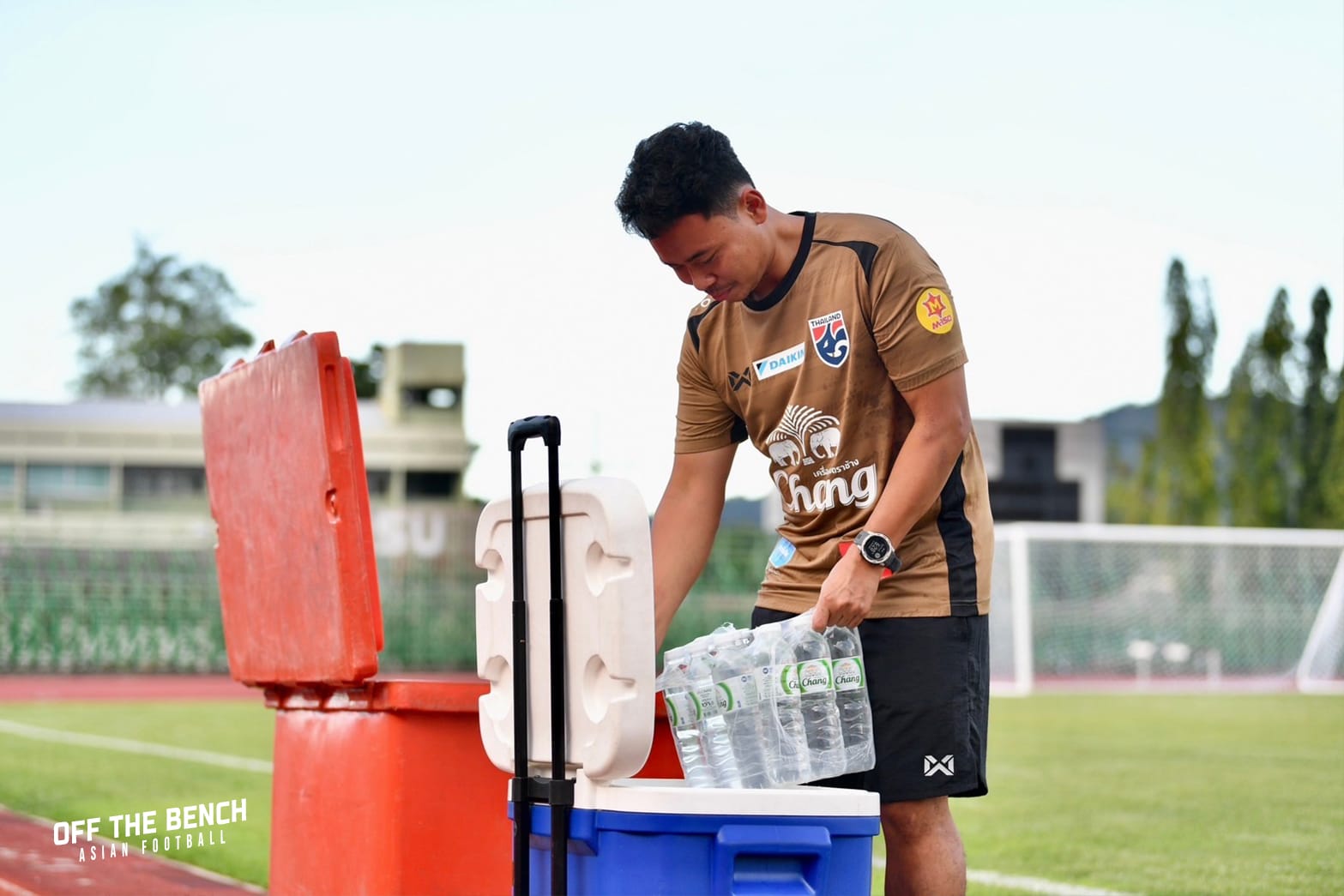
"On training days alone, we go through at least 30 packs of water. That might sound like a lot, but it’s not—because we have to account for the entire staff as well."
"In Thailand, it’s easier since we can buy sports drinks ready-made. But abroad, we sometimes can’t find the exact products, so we bring electrolyte powders to mix ourselves. We also prepare snacks like bread or energy bars, but everything must be nutritious and align with dietary guidelines."
Working with a Detail-Oriented Head Coach
Japan’s Masatada Ishii, the current Thailand national team head coach, is known for his meticulous approach. From training equipment to cleanliness, he leaves no detail unchecked.

"Ishii is incredibly detail-oriented. For instance, he prefers flat training cones so the ball rolls over them smoothly instead of bouncing unpredictably."
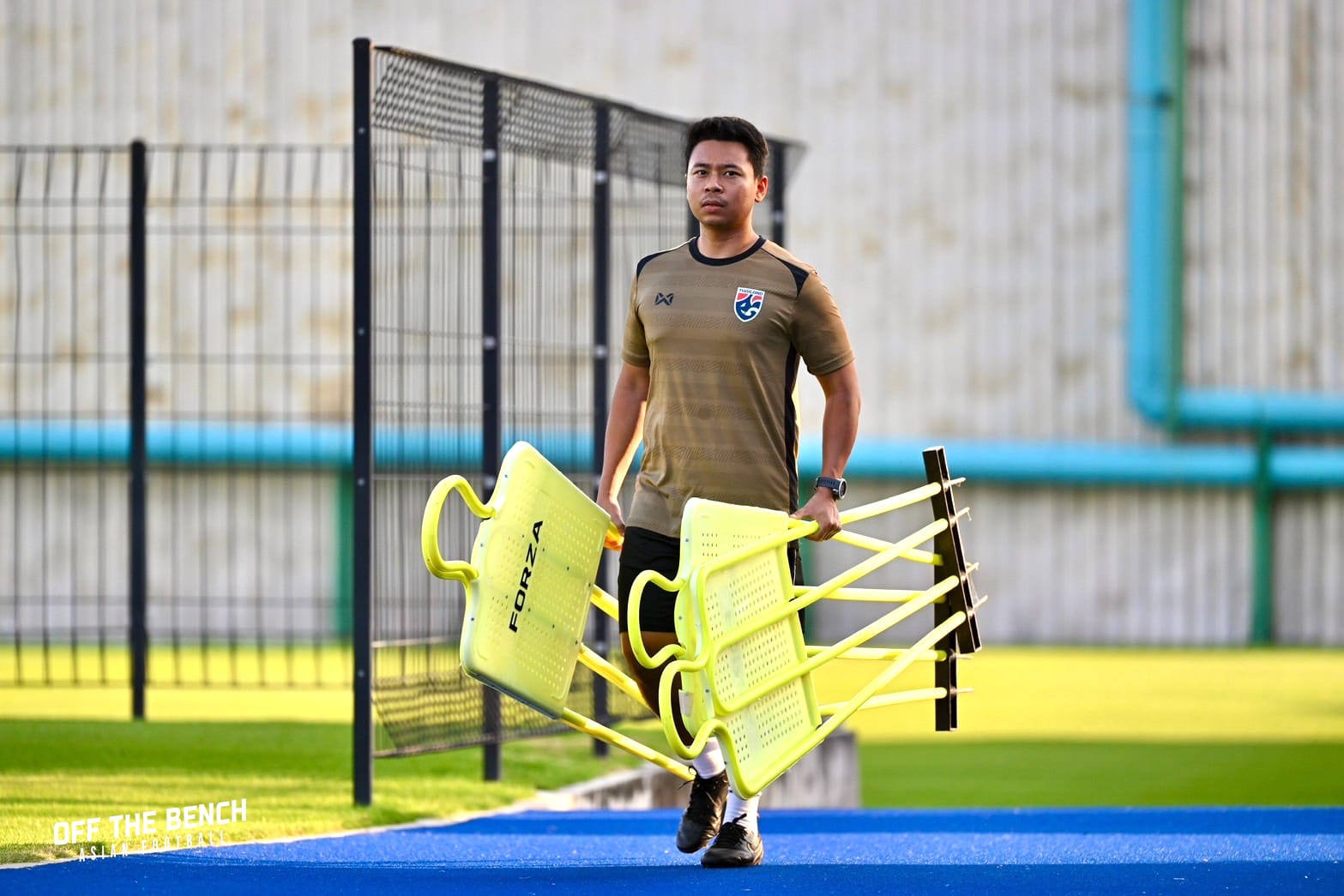
"He also requests an unusually high number of training balls—30 to 40—so players don’t have to waste time waiting. This isn’t an issue in Thailand, but when traveling abroad, we must consider baggage weight restrictions.
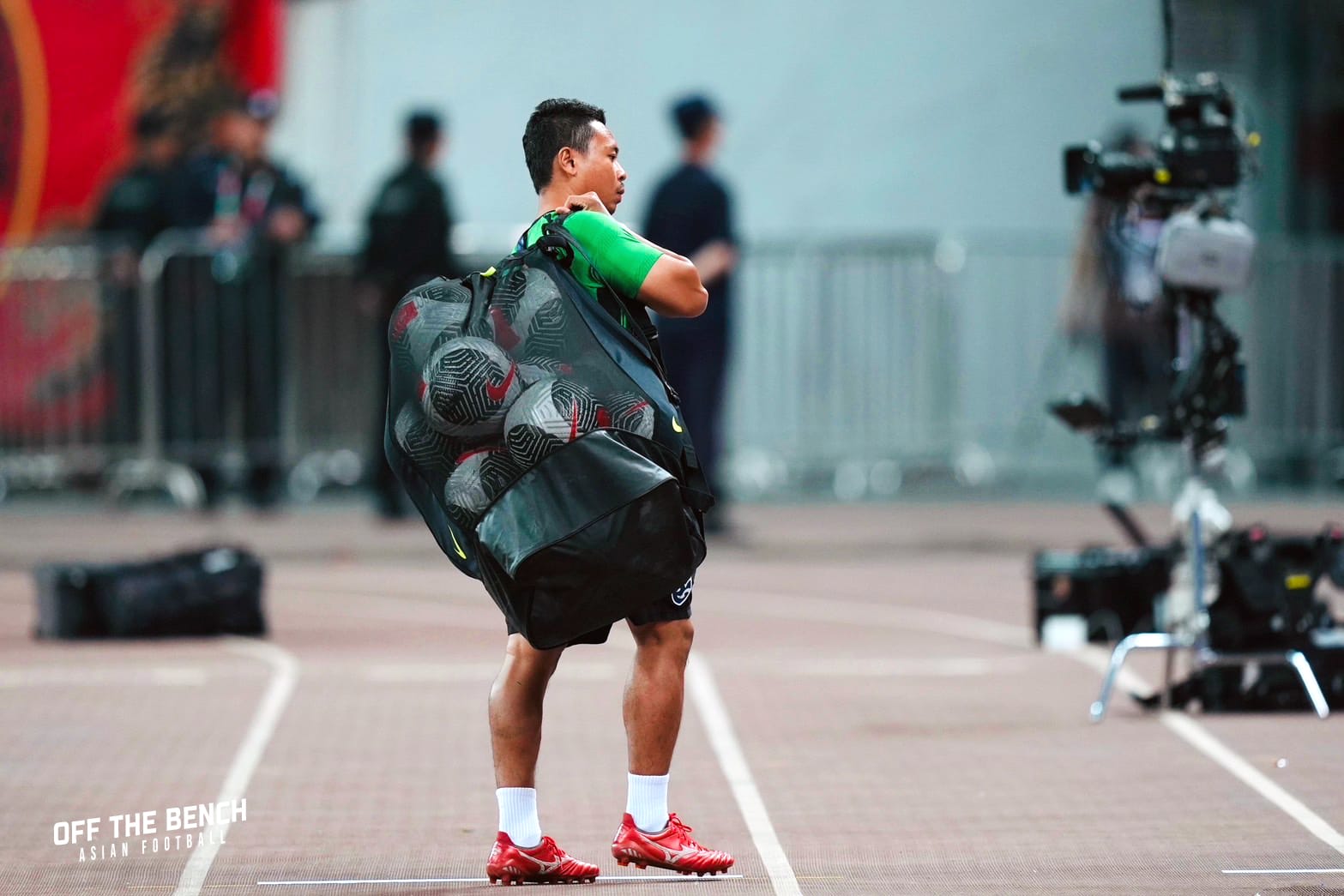
"We even deflate the balls before packing and reinflate them upon arrival. Sometimes, Ishii himself helps with this process, and if any balls go missing after training, he’ll personally search for them."
One thing he emphasizes heavily is cleanliness—the Japanese way. After every match and training session, trash must be properly disposed of, and locker rooms must be left spotless, maintaining Thailand’s national team’s reputation.
A Kitman’s Pride: Being Part of the Team
Though they don’t play on the field, Kitmen experience the highs and lows of every match just like the players do.
"At the end of the day, those of us working behind the scenes feel like an integral part of the team. Even if we don’t play, we celebrate victories together and share the disappointment of defeats."
"We dedicate ourselves fully to supporting the players so they can perform at their best. Our goal is to help them bring success to Thailand, making fans proud every time the national team competes."
So, next time you watch Thailand’s national team play, take a look at the ice bucket near the bench—you might just spot Not standing there, making sure everything is perfectly in place.





